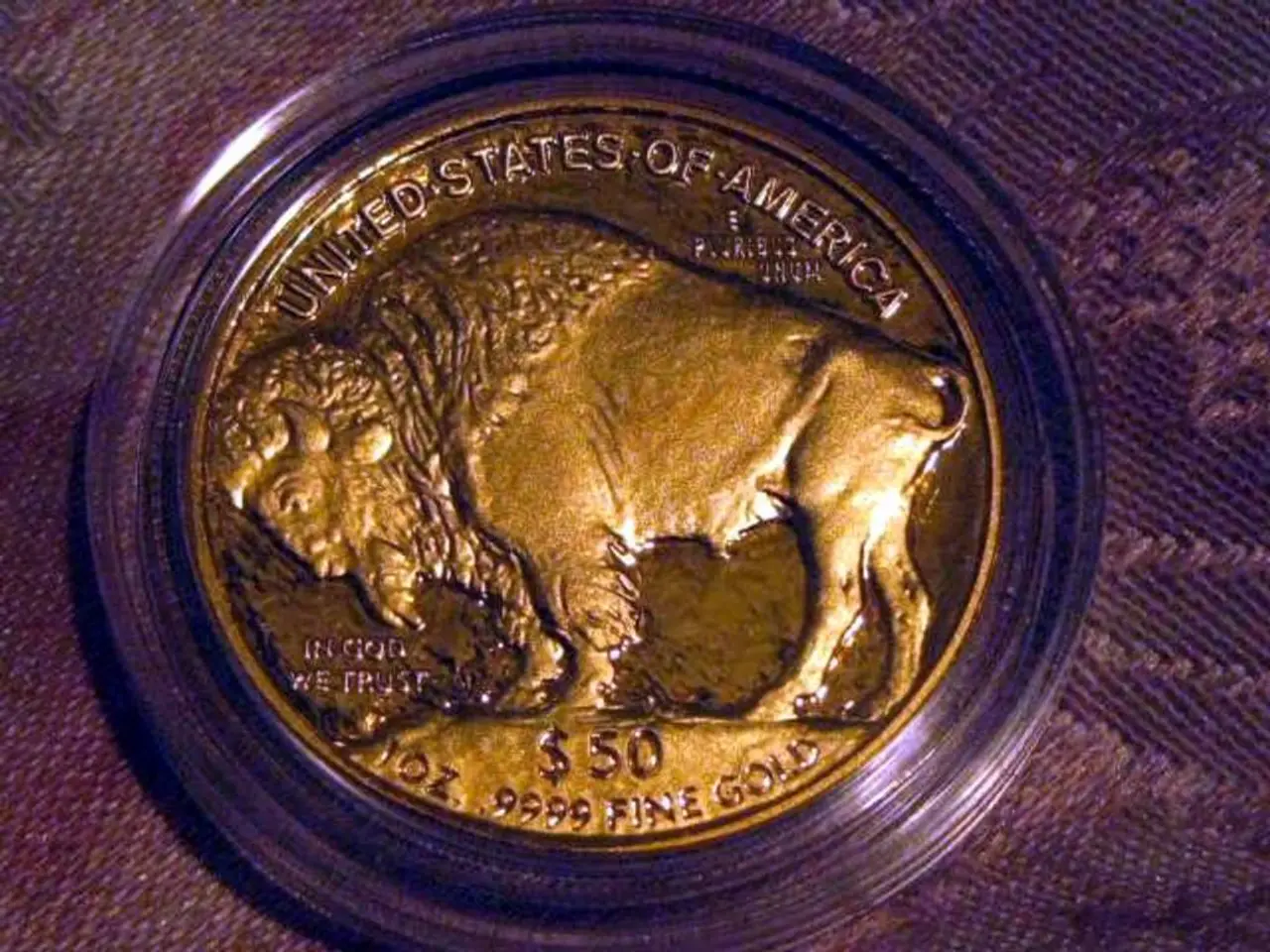Investors from abroad safeguard their assets amid a potential fall in the value of the US currency
In the global financial landscape, foreign investors have been actively adjusting their strategies to mitigate currency risk, particularly in relation to the US dollar. The MSCI gauge of global stocks, excluding the U.S., has risen 16% year-to-date, while the S&P 500 has rebounded, up 5.3% year-to-date. However, the US dollar has experienced a 10% decline this year, leading to increased hedging against a weakening US dollar[1][3].
The causes for this trend are multifaceted. In April and May 2025, the US dollar experienced significant depreciation, partly triggered by US tariff announcements and a "triple decline" where US equities, bonds, and the dollar fell together[1][2]. Additionally, the historical correlation between US equities and the dollar has weakened, prompting investors to reconsider their FX hedging strategies[4]. Economic and policy outlooks, such as expectations of a US economic slowdown and Federal Reserve policy keeping interest rates higher for longer, also play a role in hedging behavior[2][3].
The effects of increased hedging are far-reaching. Hedging helps limit currency risk for foreign investors holding US assets amid USD fluctuations, enhancing portfolio stability and performance[2]. However, the increased hedging flows can amplify USD volatility during periods of market stress or policy shifts[4].
Common hedging strategies used by foreign investors include FX swaps and forwards, partial hedges, and active hedging approaches. Asian and other foreign investors have added overlays of FX swaps and forwards to hedge USD exposure on their US dollar securities holdings[1]. Investors often use partial hedges rather than full coverage, adjusting dynamically to currency outlooks and market conditions to balance cost and risk[2].
In conclusion, foreign investors have significantly increased their hedge ratios as a response to signs of USD weakness and changing economic fundamentals. This activity itself has influenced dollar dynamics, creating a feedback loop where hedging flows contribute to dollar moves. Strategies involve using FX swaps, forwards, and partial, active hedging approaches to balance currency risk and investment exposure in a complex global environment[1][2][3][4].
References: [1] IndexBox Market Intelligence Platform [2] Financial Times [3] The Wall Street Journal [4] Bloomberg
Global trade and investment strategies have witnessed alterations as foreign investors have heightened their hedge ratios to shield their businesses against a weakening US dollar. In the realm of finance, this increased hedging has become crucial for portfolio stability in global trading, particularly when held in US assets.




